Dr. Mashirito’s Ultimate Manga Technique (21 July 2023)
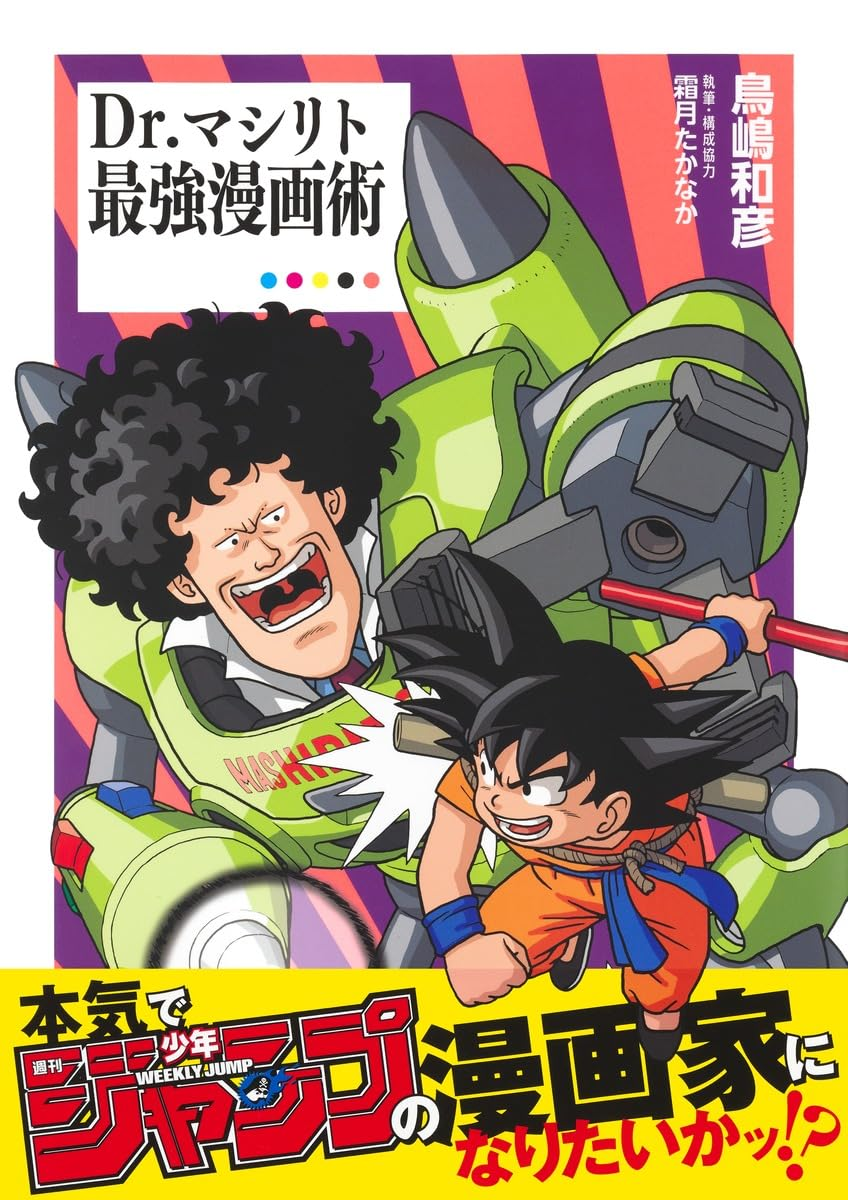
Ultimate Interview Vol. 1: Akira Toriyama x Kazuhiko Torishima
As a special project just for Ultimate Manga Technique, we present the latest talks between Kazuhiko Torishima and three popular cartoonists who were paired with him. Our first guest is Akira Toriyama, the world-renowned manga legend. Meeting each other face-to-face for the first time in a decade, the pair will hold the ultimate talk on the subject of Dr. Slump and Dragon Ball.
■ “I had been told that all I did was ‘goof off,’ so that made me happy”
The first time I met Toriyama-kun was my second year after joining Shueisha. It was brought about by his second entry into the monthly “Young Jump Award” contest1.
Toriyama:
My first submission was Awawa World2, and my second was Mysterious Rain Jack. It was almost entirely a Star Wars parody, since that was the big hit at the time. (laughs) It was a story about kidnapping the thunder god to manufacture a drought, and then making money by selling water (fig. 1).
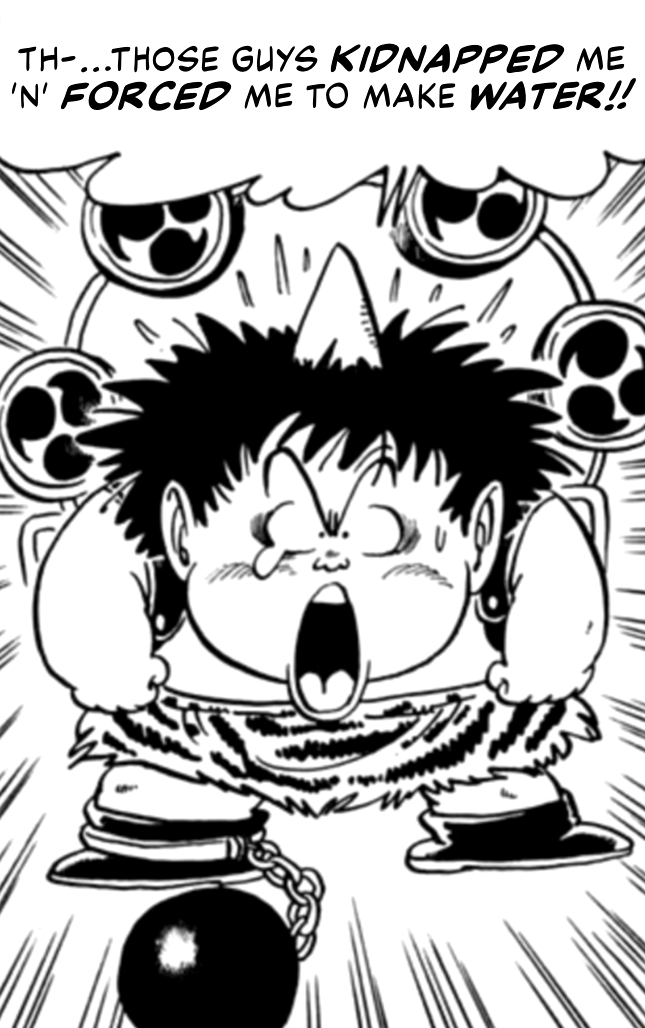
Fig. 1: The child Thunder God as he appeared in the 1982 one-shot PINK.
You put out similar stories here and there later on, didn’t you?
Toriyama:
It’s a subject I’m fond of — it was ultimately even used in the one-shot series Sand Land3.
Torishima:
The submission wasn’t selected. But the hand-lettered bits were really good. The design sense was refined, and it caught my attention.
Toriyama:
I’d gotten my start at an advertising agency, so I could at least do that much.
Torishima:
Except, there was the fact that that sort of thing was rare, and also — and this is true of me even now — I hate it when the linework is uneven, or the art is poor.
Toriyama:
So, he contacted me. My parents kept telling me that I all I did was “goof off,” so it made me happy, although not so much, since I had been in it for the money… (laughs)
Torishima:
I mean, you couldn’t get the prize money if you weren’t selected. (laughs)
Like a skinny and energetic flamingo. (laughs) He was a loudmouth, too. I prefer people who say what they want to say over ones who are polite but inscrutable, though, so I think that point, at least, worked surprisingly well with me.
Torishima:
Toriyama-kun was an ordinary person (fig. 2), in a good way. There are a lot of rookie cartoonists, after all, who are brooding, or have extremely strong inclinations, which made me think, “I don’t really want to work with this sort of people.”

Fig. 2: Akira Toriyama in his first appearance within Dr. Slump.a He truly is “an ordinary person”(?)!
I was really absorbed in them when I was an elementary schooler, but after that, my interests gravitated toward movies and art, so I stopped reading comics as much. I’d watch pretty much anything except romance, starting with spaghetti Westerns.4
Torishima:
That really comes out in Dr. Slump, with dumb movie parodies, like Dirty Harry.5
Toriyama:
I also liked live-action TV shows more than animation, and got worked up over Ultra Q6 and Ultraman, which I saw when I was in elementary school.
Torishima:
In Dr. Slump, what threw me for a loop was how you didn’t include Arale at all in the initial storyboard for the second chapter. “Why doesn’t that cute, funny girl show up?” I asked him, and he said, “She’s just one of Senbei’s inventions, so that one chapter is all there is.”
Toriyama:
I was thrown for a loop, too, when you said, “Make that girl the main character.” I was like, “Whaaat?”
Torishima:
So he says, “I don’t wanna.” And when I asked him why, he told me, “Because it’s a comic for boys.”
Toriyama:
Men of the Shōwa era [the reign of Emperor Hirohito, 1926–1989–trans.] are particular about manliness, so I really didn’t want to have a girl as the protagonist.
Torishima:
So I made a bet with Toriyama-kun. I said, “Draw a comic with a girl as the lead for the Jump extra issueb, and if it doesn’t make the top three in the popularity ranking, you don’t have to make Arale the main character.” That was Tomato the Cutesy Gumshoe (fig. 3).
Toriyama:
Hrrrm… This is another piece I’d rather forget….

Fig. 3: Tomato the Cutesy Gumshoe: One-shot from 1979. A screwball comedy in which 18-year-old detective gal Tomato stirs up trouble.
■ “I ran out of reserve material right out of the gate!”
And then, it placed an impressive third. I had him put Arale in the second chapter onward, and I submitted the first three chapters he’d drawn for a serialization meeting. But the vice-editor-in-chief at the time7 was given to making unreasonable demands, so even though the series was picked up, it wasn’t in full color at the front of the magazine, nor was it on the cover. On the contrary, they put the first two chapters in together that first week without consulting us.
Toriyama:
That’s right! I ran out of reserve material right out of the gate.
Torishima:
That was a shock, making “two chapters in one go” a selling point. And then it reached the top of the popularity ranking with the third chapter, and out of the blue he told us, “Draw a color chapter for the pages up front.”
Toriyama:
I was happy about that, but also conflicted. When I started drawing the series, I asked, “Will I have to continue doing this every week?” and you told me, “You’ll be fine. If it isn’t popular, it’ll be over in 10 weeks,” but then all of a sudden I was thrown into the grind from Hell. I didn’t even have an assistant, so I could only sleep an hour each day. Initially, I was fairly particular about the inking, but then I gradually found ways to save on time. (laughs)
Torishima:
So about six months into Dr. Slump, you started getting vocal.
Toriyama:
I just couldn’t see how long I’d be able to keep gritting my teeth like that. Having to wrap everything up in a single chapter every time was really exhausting.
Torishima:
So along the way, you started doing things like athletics competitions, and a kick-the-can tournament.
Toriyama:
Those were desperate measures. It was obvious that I was forcing things to stretch.
Basically, most of the time I’d have Torishima-san evaluate what I’d drawn on my own.
Torishima:
There was almost no “Take it in this direction” or “Draw something like this.” Such as it was, when he started complaining along the way that drawing self-contained stories was rough, I suggested doing things like an athletic competition — that’s about it.
Toriyama:
Dr. Mashirito (fig. 4), too — at first, I was just going to have a run-of-the-mill bad guy, when you told me, “He has no unique traits. Make him even worse.” So I said, “Got it. I’ll think it over,” and by then that character had already popped into my head. (laughs)
Torishima:
When I saw the finished manuscript, I thought, “I’ve been had!” But there was no more time for revisions. It being just before deadline, I had no choice but to give it the OK.
Toriyama:
Well, I had also cut it pretty close to the deadline on purpose. (laughs)
Torishima:
But then it was popular, so I couldn’t very well go and tell you to stop it the next time, now could I?

Fig. 4: His first appearance, in Dr. Slump chapter 67: “Dr. Mashirito’s Ambition!! (Part 1)”
■ “I’d deliver my manuscript by car to Nagoya Airport after working all night”
Generally once every week, I’d get a phone call from Torishima-san, since I’d never call him myself. (laughs)
Torishima:
Our calls would last 10 or 15 minutes, I suppose. It was almost unheard-of for us to go half an hour.
Toriyama:
That’s right. It would be about 10 minutes at the longest. Just business.
Torishima:
He didn’t have a fax machine8 at the time. So things like manuscripts and storyboards were sent by mail — something like an express delivery service.
Toriyama:
I think I shifted to airmail once the series started. I’d go and deliver it by car to Nagoya Airport9 after staying up all night working… (fig. 5) It was an early-morning flight, so the morning sun would get in my eyes, and I couldn’t really tell what color the traffic lights were; it was pretty dangerous. I did that every week.
Torishima:
Twice a week. Storyboard and completed manuscript, so it was two times.
Toriyama:
And then if the storyboard got rejected, I’d have to go make another round of photocopies at the building-materials company next door, and then head back to the airport. That was tough. I should have gotten a fax machine sooner.

Fig. 5: In Dr. Slump chapter 71, “Yay, Yay, Time Stop”, Akira Toriyama himself appears on his way to deliver his completed manuscript to the airport.
That happened because the vice-editor-in-chief was talking with Toriyama-kun, and I got there 30 minutes late because I had to take a phone call or something. Then he said something to the effect of, “You can stop if you can draw something even more fun than Dr. Slump,” and Toriyama-kun just said, “Understood.” (laughs)
Toriyama:
It’s because he said, on his conditions, I’d get to draw a comic with a male protagonist. (laughs)
Torishima:
So, as I’ve written in this book, Toriyama-kun took hints from the videos he watched while he was working. When I asked what he watched, he told me that it was kung-fu movies.10
Toriyama:
Right. I often played them in the background, in lieu of music.
Torishima:
So I said, “In that case, why don’t you draw one?” and what came back was Dragon Boy (fig. 6).
Toriyama:
I was against doing that, though. The things I enjoy watching in movies are different from what I want to draw myself. I wasn’t good with the fighting genre. Plus, I couldn’t draw really bad guys.
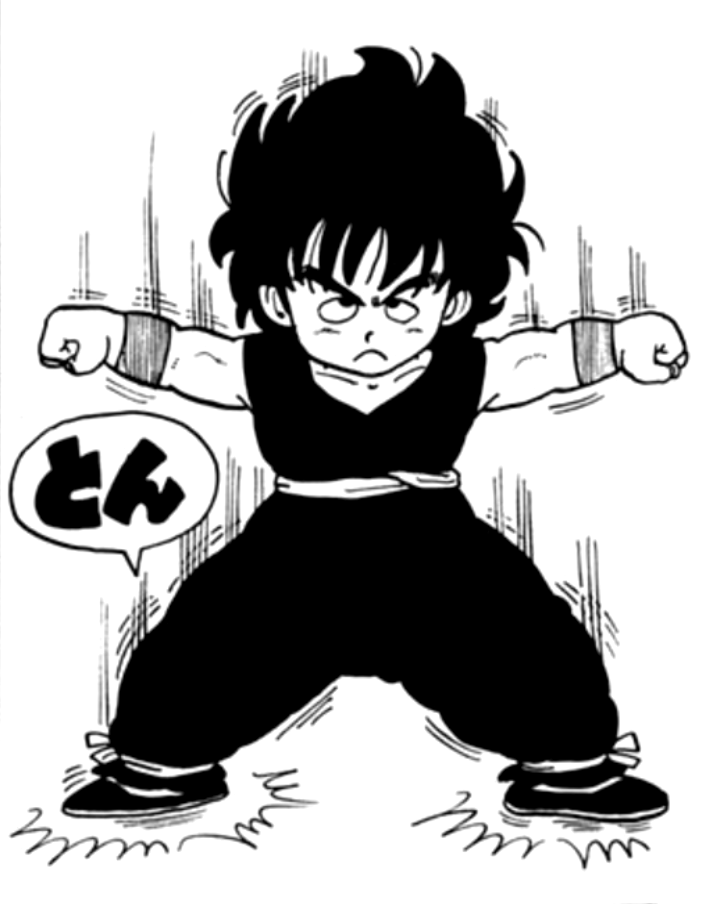
Fig. 6: Tangtong, who appears in Dragon Boy and Dragon Boy, Part 2. He has traits of Jackie Chan and Sun Wukong rolled into one. His nature is more serious than Goku’s.
■ “I hardly ever received praise, so that made me happy”
Since you mention it, it wasn’t until Demon King Piccolo in Dragon Ball, was it? Early on, you were still carrying along the atmosphere of Dr. Slump, so you couldn’t draw a truly evil villain.
Toriyama:
Yeah, that’s right — I just couldn’t draw somebody who was bad to the bone. Up until then, I’d never had Goku outright kill an opponent he’d come face-to-face with; I figured I should try it out for the first time.
Torishima:
And that’s why, when the Great Demon King stands before Goku and blows him away with a gust of wind just by waving his hand (fig. 7), I knew that Toriyama-kun had mastered making an evil character.

Fig. 7: Having restored his youth using the Dragon Balls, Demon King Piccolo overpowers Goku.
I still remember when you told me that. You concern yourself with the strangest things, don’t you. (laughs) “The way he does that just by waving his hand — that’s good,” you said. You hardly ever praised me, so that made me happy.
Torishima:
“Hardly ever”? I seem to recall giving you quite a bit of praise.
Toriyama:
Naaaaah, I don’t think so. (laughs) But you know, with a truly evil villain, there’d still be this feeling of uncertainly left if I just left it at them being defeated, so I’d have people be resurrected with the Dragon Balls.
Torishima:
You really struggled up until you drew Dragon Boy, but once you hit on a winning concept, you managed to get a storyboard together relatively quickly for what became Dragon Ball. You brought Sun Wukong in as the main character, and had his Compliant Rod11 and Somersault Cloud12, as well.
Toriyama:
Goku’s character design was even a monkey at the beginning, wasn’t it.13 I liked Journey to the West14, so I thought I’d do an arrangement of that story.c
Torishima:
Having the dragon that comes out when seven balls are collected was your idea, though, wasn’t it, Toriyama-kun? Once the story was firmed up, the serialization meeting was practically a formality. You made the storyboard for the first chapter, and the series had already been picked up with the second chapter virtually sight unseen.
Toriyama:
But early on, it was still half jokes. The story was half-cocked, and Goku seemed like he’d be fighting, but he didn’t actually fight all that much.
Torishima:
While you treated it as a road movie15, its place in the popularity ranking kept on slipping, so thinking that it wouldn’t be good if this kept up, you started a “training arc” and brought in Kuririn. And when that helped it get to the top of the rankings and hold steady, you know what you said? “Y’know, a story manga is still nice and easy. After all, you can stop whenever you run out of pages.”
Toriyama:
Yeah, because I could always end a chapter with “To be continued.” (laughs)
Torishima:
Later, you said that next you couldn’t go on with Goku’s size as small as it was. “I can’t draw action like this, so I want to make him bigger,” you said. I was against it.
Toriyama:
You were vehemently opposed.d
Torishima:
I mean, we’d worked so hard to build up an audience for Goku as he was, and you were going to go and change him. There’s nothing scarier than that. But then you said, “I can’t continue the series if I don’t.” So I talked to the editor-in-chief, and he answered tepidly, “Well, if that’s what he wants to do, then why not?”
Toriyama:
He didn’t care.
Torishima:
I suppose not. (laughs) I was beside myself with worry, though, and so the afternoon of the day the first issue with the grown-up Goku (fig. 8) came out, I waited in the editorial department, fearing there’d be people calling in to complain. But there was only a single call, from an adult. And its popularity ranking remained at first place regardless, not budging at all.

Fig. 8: Goku appears at the 23rd Tenka’ichi Budōkai having grown into an adult. The Turtle Sage and Bulma are both surprised to see he has grown from a child into a young man in the space of just three years.
■ “I gave Super Saiyan white hair so I wouldn’t have to black it in”
Yes, that’s right. I tried to make myself look good by saying I did it on purpose, but I simply didn’t do it because it was a pain. (laughs) After all, if a character started moving of their own accord as I was working, then so much the better; I’d think, “This character actually works unexpectedly well.” But in the character popularity polls, I wondered why villains got first place instead of the hero. With Vegeta, I even went out of my way to not make him cool-looking, giving him an extremely dramatic hairline (fig. 9). (laughs)
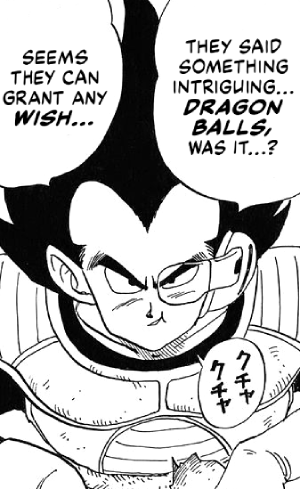
Fig. 9: Vegeta, appearing for the first time after Goku and Piccolo defeat Raditz. One year from now, he will attack Earth.
Vegeta is popular. Apparently he’s perennially #1 in France.
Toriyama:
Really? But why, though?
Torishima:
Also, reading back through Dragon Ball, the fights in the parts when I was editor have a lot of punches and physical combat. But as it gets to the later parts, there are more beam struggles. Is that because those were easier to draw?
Toriyama:
What, me? Never! It’s because the level of the fighting got higher, but it may still have been a relief to my sole assistant. I also went and destroyed the Tenka’ichi Budōkai ring earlier on because it seemed like a pain to draw.
Torishima:
That was also why the hair for Super Saiyan didn’t need to be blacked in, right?
Toriyama:
That’s because the first person to finish inking would have to be the one to erase all the pencil marks. (laughs)
Torishima:
When I first saw it, I thought, “Ah, it’s cutting corners, but I suppose the readers won’t notice.” (fig. 10)
Toriyama:
Ahaha. (laughs) I’m a master of the plausible excuse.
Torishima:
I think you’re a genius at making things hang together, Toriyama-kun.
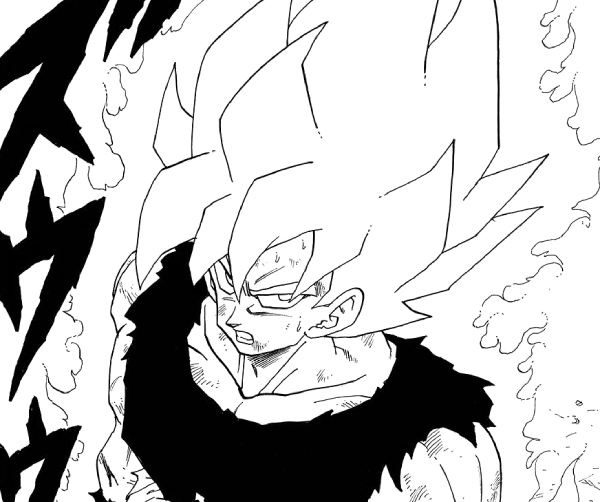
Fig. 10: Goku, having awakened as a Super Saiyan during his clash with Freeza
■ “The action scenes inside my head come out of kung-fu movies!”
With regards to the art in Dragon Ball, I guess you could say there’s the influence of the animator Toyo’o Ashida-san16. He’s since passed away, but meeting and talking with him, we saw eye-to-eye on a lot of things, and Ashida-san‘s art, which was careful yet had a tension to it, was really good. And as we worked on this and that, it seems we both influenced each other.
Torishima:
Back when it was decided that Kosuke and Rikimaru: The Dragon of Konpei Island17 was going to be made into an original animation based on your concept, Toriyama-kun, I had the animation director Toyo’o Ashida introduced to you through a mutual acquaintance. Rather than starting with a meeting, I thought it might be faster to have the two of you start work after discussing things together.
Toriyama:
And then, when I tried drawing with Ashida-san‘s artistic touch as a reference, my pen sped confidently along the page, so it gave a sense of speed, and I could draw in a jiffy, so my own speed also rose by about a factor of 15. After that, drawing action didn’t feel like as much of a slog as before.
Torishima:
So the way your linework becomes stronger and more angular from around the time of the fight with Vegeta came from that. I never knew.
Toriyama:
Right. That’s Ashida-san‘s influence.
Torishima:
Was drawing action really that much of a pain before that?
Toriyama:
Drawing slowly with my earlier, more rounded touch wasn’t really suited to the movement of action, you know?
Torishima:
Goku got taller, and the linework got more angular (fig. 11), which added weight and punch to your uptempo, speedy action portrayals.
Toriyama:
Yes. That’s because the action scenes inside my head come out of kung-fu movies. The characteristic of Bruce Lee’s movements, where he stays perfectly still before suddenly moving all at once — I loved that.
Torishima:
Certainly this comic’s action may be an original type developed out of Bruce Lee rather than Jackie Chan.
Toriyama:
It’s specifically because Jackie’s style of action choreography is something special to live action, that it’s difficult to use in manga.

Fig. 11: In the latter half of the story, the action bursts off the page with a hard, angular touch.
That’s the hardest thing about action manga. If you draw it on the same level as the previous fight, it’ll seem to the readers that the level has actually gone down. So I gradually came to believe that there’s a limit to making the characters stronger. In terms of having to take the level of action portrayals even higher, it got quite difficult from around the time the battle with Freeza ended.
Torishima:
That would have been the best place to stop, too. (laughs)e
Toriyama:
That’s rich, coming from you. (laughs)
Torishima:
Well, when it got to have such runaway popularity, we couldn’t very well have that, now could we?
■ “I wouldn’t have become a cartoonist if it weren’t for Torishima-san“
With Dr. Slump, I was basically learning how to draw comics as I went, and with the sudden serialization, the tough parts were really tough. Even when I was doing my best to keep to my deadlines, I’d come down with a terrible cold and run a high fever in the midst of things. There are about two chapters I don’t even remember inking. (laughs) But by the latter parts of Dragon Ball, once I got to the fight scenes, there were often times when I’d go from storyboard to completion in as little as a single day. Of course, it’s not like I was taking the work lightly, or anything.
Torishima:
You don’t take any time thinking about the story, after all.
Toriyama:
But then, why was I always so busy that I could hardly find the time to sleep…?
Torishima:
In other words, it’s all about how far you can bring your creations in the direction of the things you’re good at. Otherwise, drawing manga will just become work, and you’ll get sick of it.
Toriyama:
The fact that I worked a company job before I became a cartoonist definitely has a lot to do with it. If other people have problems at work because of something you did, it’s plain for all to see.
Torishima:
Apart from you, I’ve only ever heard that idea — that a lot of people will be inconvenienced if you’re late with your manuscript — from two others: Akimoto-san18 and the late Kazuki Takahashi-san19. All three of you had experience as members of the workforce, employed at a company.
Toriyama:
I mean, keeping a deadline is an ironclad rule. Doesn’t make a difference if it’s just making fliers. But, thinking about it, Torishima-san, if you hadn’t been in the editorial department when I sent in my submission, I might never have gotten to become a cartoonist.
Torishima:
That goes for both of us. If I hadn’t met you, and then been responsible for putting out a hit in my third year with the company, I probably would have been the most bullied member of the editorial staff. (laughs)
Toriyama:
In the end, I’m glad. I had always wanted to get a job in design or illustration, but somewhere along the line, I came to think, “This is kind of like being able to make my favorite movies by myself,” and after that, my attitude changed.
Torishima:
Except we’re both conscious of the fact that this is a job, and not a hobby. That we should just get it done. Even so, there really is almost no one at Jump who’s had a hit with two series in a row.
Toriyama:
I might have just been lucky. Plus, getting advice and such from you, Torishima-san, compartmentalizing it as, “Well, it’s just a job,” might have been where things really started to click. After all, neither Dr. Slump nor Dragon Ball were anything like what I would consider my preference. (laughs)
Torishima:
If you put it that way, the fans might be shocked. (laughs)
Toriyama:
Come on. I’m well aware that if I really drew something the way I wanted, it wouldn’t be popular. (laughs)
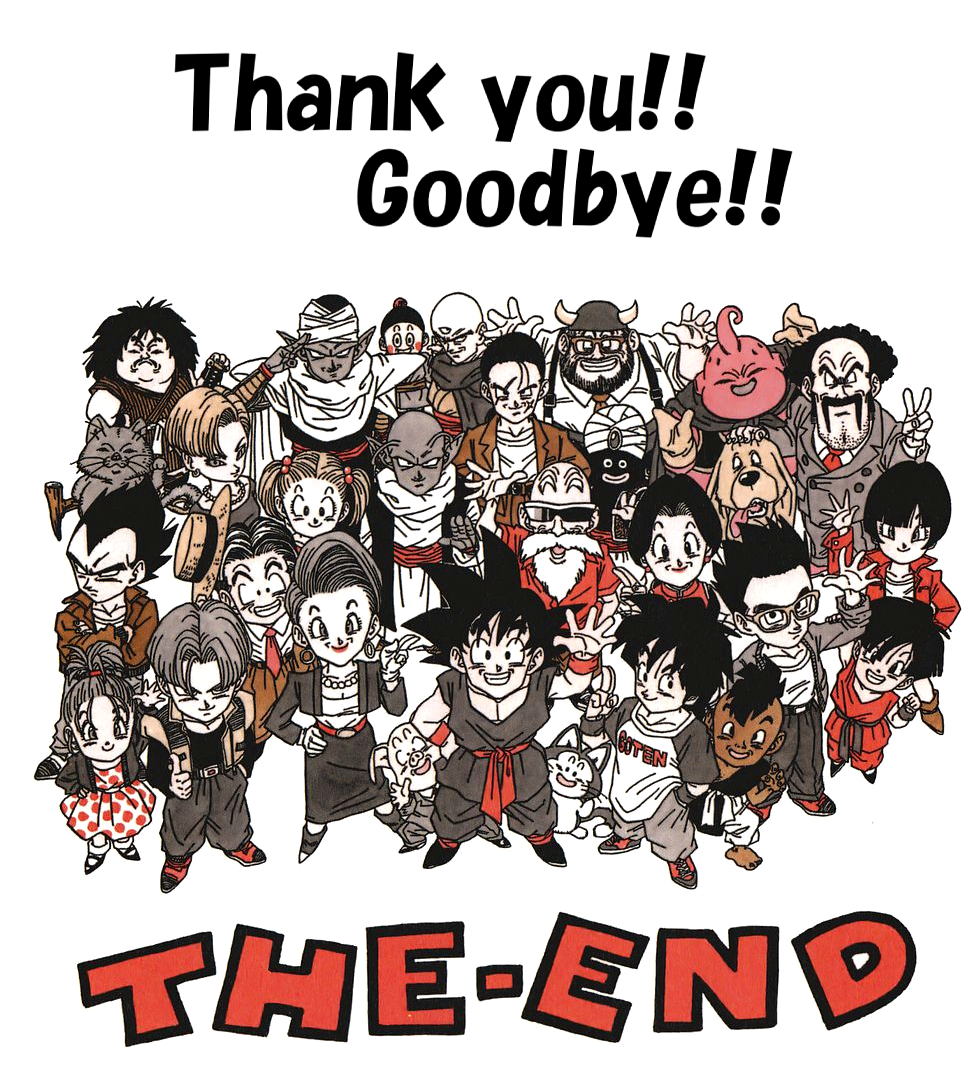
In June [sic]f 1995, Dragon Ball‘s decade-long run came to a close. Now, a new series continues to evolve.
2 The manuscript has been lost.
3 A short-term focused series [i.e. one with a predetermined length and ending] by Akira Toriyama, which ran from Weekly Shōnen Jump 2000 #23 to the #36/37 double issue that same year. It has been made into an animated motion picture, which is slated for release on August 18th, 2023.
4 Westerns made by Italians during the 1960s and 70s, which also became popular in Japan. A Fistful of Dollars (1964), which shot Clint Eastwood to stardom, and its sequel, For a Few Dollars More, are two well-known examples.
5 A police action-thriller starring the eponymous detective, played by Clint Eastwood. It was released in 1971 and became a hit, receiving four sequels.
6 A science-fiction tokusatsu (special-effects-focused) TV series, broadcast in 1966. As the starting point for its better-known sequel, Ultraman, many giant monsters appear.
7 Shigeo Nishimura, who would later become the third editor-in-chief of Weekly Shōnen Jump.
8 Short for “facsimile.” An electronic device for sending and receiving still images over telephone lines, which was widely used before the internet became commonplace. There were structural difficulties with transmitting a manuscript as such, but it was apt for storyboards, so it was prized as a communication tool between cartoonists and their editors.
9 Now called Prefectural Nagoya Airport. Situated on the northern outskirts of Nagoya, it was known as “Nagoya Airport” and served as a hub of air travel in the Chūbu region, but was downgraded to an airfield in 2005 with the opening of Chūbu International Airport (Centrair).
10 Action movies utilizing Chinese martial arts for fights. Birthed such stars as Bruce Lee, who kicked off a worldwide boom, and Jackie Chan (the inspiration for Jackie Chun, the Turtle Sage’s alter ego), who mixed comedic elements into his action.
11 12 Both items that belonged to the character Sun Wukong in the Chinese novel Journey to the West. The Compliant Rod (Ruyi bang / Nyoi-bō) is said to have been made by the Taoist god Laojun, the deified Lao-tzu, and is able to change its size, weight, and length on command. The Somersault Cloud (Jindou yun / Kinto’un) is a cloud controlled through Taoist magic.
13 Early concepts for Dragon Ball featured manga designs for Sun Wukong, Zhu Bajie, and Sha Wujing of Journey to the West, stylized with Akira Toriyama’s personal touch.
14 A Chinese vernacular novel written in the 16th century, during the Ming dynasty. Buddhist monk Tripitaka (“Sanzō” in Japanese) leads Sun Wukong (Son Gokū), Zhu Bajie (Cho Hakkai), and Sha Wujing (Sha Gojō) on a quest to reach India, having fantastic adventures along the way.
15 A genre of film depicting events that occur during a journey by car, similar to a travelogue. Alice in the Cities (1973) is one such example.
16 A famous anime director and animator, known for the character designs of Mashin Hero Wataru, among others. Passed away in 2011.
17 An original animated production for the 1988 “Jump Anime Carnival,” created by Akira Toriyama.
18 Osamu Akimoto. A legendary cartoonist, known for the Shōnen Jump poster-series This is the Police Station in Front of Kameari Park in Katsushika Ward. “Kochikame,” which is also his most recognizable work, ran from 1976 to 2016, and still continues on an irregular basis. Its collected volumes number more than 200, which earned it a spot in the Guinness Book of World Records.
19 A popular cartoonist, known for the major hit Yu-Gi-Oh. Having been a designer for a game company, he made use of his strengths in Yu-Gi-Oh with items such as a tie-in card-game, which allowed it to grow into a multimedia franchise. Passed away in 2022.
b Shueisha regularly publishes “extra” issues of magazines during the year outside the normal weekly/monthly/etc. allotment. For this one in particular, Torishima and Toriyama are referring to an extra Weekly Shōnen Jump Extra Issue released in July 1979 — predating the actual serialization of Dr. Slump by about half a year — where Tomato was first published. It was only Toriyama’s fourth time being published in a Jump issue (three of which were in these “extra” issues, with only his professional debut, Wonder Island, being published in a normal Weekly Shōnen Jump issue, back in the the 1978 #52 volume).
c Journey to the West, one of the “four great classical novels” of Chinese literature, is a 16th century story that follows the pilgrimage of a Buddhist monk to retrieve legendary scrolls from India. Along the way, he befriends (in a way…!) a group of monsters, demons, and gods. Early Dragon Ball plays with some of these elements (characters, items, locations, etc.) before spinning off into its own completely separate story. For more information on how Journey to the West shaped Dragon Ball — as well as how Dragon Boy and The Adventure of Tongpoo did the same — check out our “Dragon Ball Prototypes & Drafts” page within our overall “Manga Guide” here on the site.
d Toriyama has recounted this story a few times, such as in his interview for the 30th Anniversary Super History Book.
e A plug for our extensive “Intended Endings Guide” is mandatory here.
f The final chapter of the Dragon Ball manga was published in the 1995 #25 issue of Weekly Shōnen Jump, which hit newsstands in Japan on 23 May 1995. This is the date that it actually came out: it is its formal, real, actual release date. The “cover” date for the issue was June 5th… but this is merely for categorical purposes only, and is not the actual date the issue was released. Think of it as similar to how V-Jump comes out on the 21st of every month, but is forward dated two months from that point; each January of a new calendar year, you’re actually getting that year’s “March issue”.